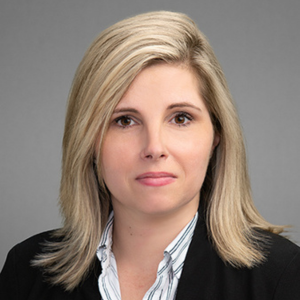Distressed properties
At a glance…
When evaluating a distressed property there are several questions that need to be addressed, including diagnosing problems, evaluating opportunities, and knowing your investment strategy.
With healthcare reform at the top of the national agenda, at least until recently, the long-term care profession has watched closely to understand and anticipate the impact on future reimbursement. If that alone is not enough to cause major anxiety, we also have to wrestle with state budget deficits and a recession that doesn’t have an immediate end in sight. Having been involved in long-term care for more than 25 years (primarily a financial capacity), uncertainty is not a stranger. It is something you live within any business environment; however, long-term care has the added dimension of government reimbursement and regulations to contend with. Often the threats do not materialize or are not as bad as they first appeared.
However, there have been instances where those threats became a reality for many providers. As a Florida-based operator, we saw this reality back in the early 2000s. Approximately 25% of Florida nursing homes filed for bankruptcy at that time because of runaway litigation that caused the insurers to pull completely out the state, along with Medicaid reimbursement shortfalls and the transition to the Prospective Payment System. In fact, approximately 20 facilities were closed-never to reopen. External factors contributed to the distress of these facilities, but there were internal considerations as well. Why did some facilities survive better than others? What were the factors that contributed to the facilities that couldn’t make it? Did this create any opportunities?
Different approaches
As a CPA practitioner, I had the privilege to work with a variety of different operators going back to the 1980s. This allowed me to observe different approaches from a financial perspective, including for-profits, not-for-profits, large chain operations, regional operations, and stand-alone independent operators. I’ve observed operations in each category that were successful and others that were not. Based on my experience, the following factors seem to be common in each case.
Experience and strategic financial planning played a major role. Successful groups emphasized a long-term approach to growth and operations. They were typically hands-on and had significant depth in human resources and financial strength. Conversely, the groups that took a short-term approach to long-term care often struggled. In Florida, we call those with the short-term approach “financial tourists”-here today, gone tomorrow. The focus on short-term performance did not allow for the development of adequate resources. I watched one group grow quickly to more than 50 facilities located in a number of different states attempt to model its corporate structure after another group that had a very lean and highly efficient corporate structure. The problem was that the group that was efficient had been in existence for a number of years and consisted of well-trained, experienced staff. They had worked together for many years and operated well as a team. The attempt to copy this corporate structure looked good on the outside, but struggled with the increased number of facilities.
Although this wasn’t the only factor, it was an overwhelming task for staff to keep up with and it contributed to their downfall. That group is no longer in existence. This is a very complex business that has a lot of moving parts. It is ever-changing and requires a lot of attention to detail and constant communication.
Financial structure
Another factor that seemed to have an impact was the financial structure of this facility. Overvalued acquisition prices coupled with highly leveraged debt made operations dependent upon high performance with little margin for error. In Florida, like many other states, Medicaid property costs are a separate component of the rate structure that has limits on the amount of reimbursement for those costs. In other words, you can’t subsidize losses on property costs with operating or patient care reimbursement. Other payer sources may help, but there is a limit.
I have seen some operators who were able to overcome these issues due to their skill and experience along with outside resources. But there were others that were not as well positioned. The added pressure to operate at peak performance all the time is difficult. In these situations I have seen this result in aggressive admissions policies creating bad debts, quality-of-care issues, and staff retention challenges. This scenario can result in negative earnings, leading to deferred maintenance and capital improvements, and a bad reputation in the community. All of these factors create problems that can take years to turn around.
For example, an out-of-state group overpaid for several facilities. The structure was highly reliant upon other payer sources being used to offset Medicaid property losses. It was very ambitious and would have required significant changes to the current culture in a very short time. There were too many demands with too little resources. The result? They are no longer in existence.
Creating opportunities
While the situations above address the challenges for operators, they also created opportunities. When evaluating a distressed property there are several questions that need to be addressed.
The first is to diagnose the problems. What is wrong with the facility? This would include a market study to determine its reputation in the community, staffing issues, survey issues. Obviously it should include a thorough due diligence list. Next, evaluate any opportunities that may exist. In other words, can it be fixed? Are there alternative payer sources available? What environmental changes can be made that would have an impact on operations? Is there an opportunity to rebrand or retool? Much of this depends on the capability of the prospective operator.
Finally, what is the investment strategy? What is the most beneficial way to invest capital? Are there improvements that can be made that will help reposition the facility in the marketplace? Examples of this could include adding new electric beds and furniture and creating more private rooms. Overall physical plant improvements such as exterior painting, landscaping, lobby, and interior renovations should also be considered.
While it is easy for me to armchair quarterback the situations described above, I am reminded that all of these issues only have relevance to the extent that they contribute to the ultimate mission. Our mission statement at Summit Care is very short and to the point: “Quality focused care, one resident at a time.” All of what we do is only as good as the service we provide to each individual resident.
Joseph D. Mitchell, CPA, is CEO of Summit Care II, Inc., a development and management firm of skilled nursing and assisted living facilities in Tallahassee, Florida since 1996. He is also President of Mitchell & Company, a practice he started in 1988. He has more than 25 years experience in long-term care both in industry and government, primarily concentrating in skilled nursing healthcare reimbursement.
To send your comments to the editor, please e-mail mhrehocik@iadvanceseniorcare.com
Long-Term Living 2010 April;59(4):28-29
I Advance Senior Care is the industry-leading source for practical, in-depth, business-building, and resident care information for owners, executives, administrators, and directors of nursing at assisted living communities, skilled nursing facilities, post-acute facilities, and continuing care retirement communities. The I Advance Senior Care editorial team and industry experts provide market analysis, strategic direction, policy commentary, clinical best-practices, business management, and technology breakthroughs.
I Advance Senior Care is part of the Institute for the Advancement of Senior Care and published by Plain-English Health Care.
Related Articles
Topics: Articles , Housing











